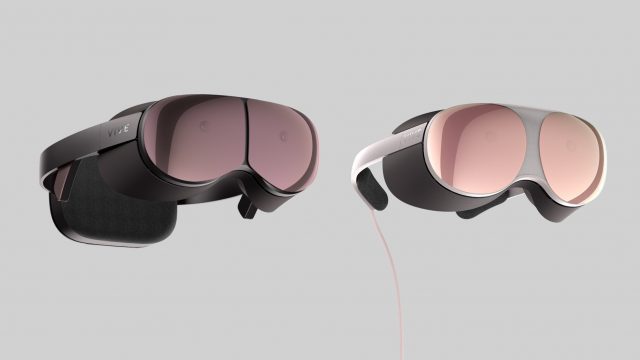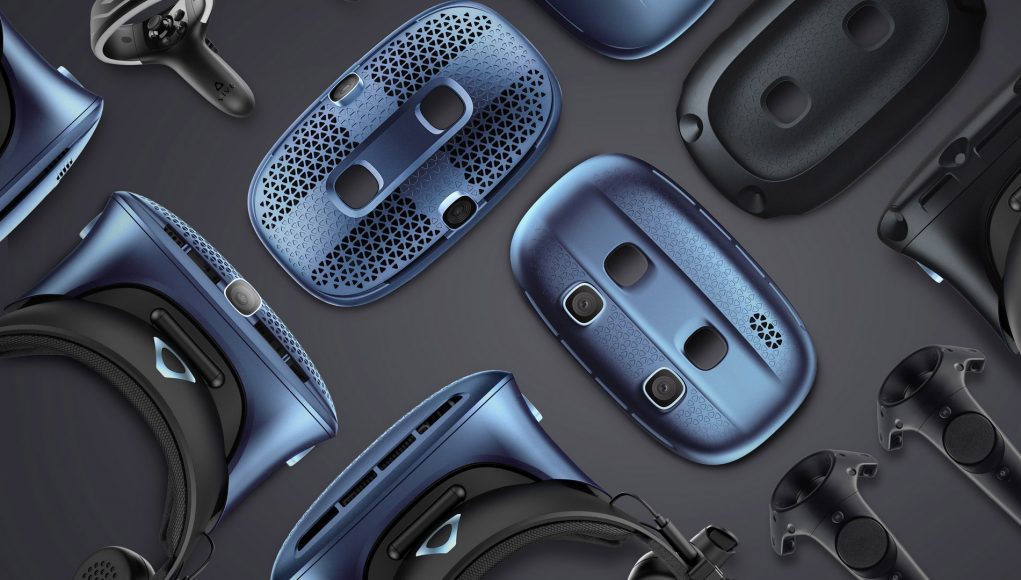But It’s Better Than Nothing, Right?
Modularity sounds great in theory, but the way HTC has structured it has made it a convoluted mess. It took me some 750 words above this paragraph to explain the various upgrade options (and how few of them make any sense)… how does HTC expect consumers to be able to understand what’s right for them at a glance?
And I’m not even touching on the other downsides of this approach; there are hardware, manufacturing, and support compromises that need to be made to accommodate a modular design. HTC hasn’t come close to offering its initial set of Cosmos options out of the gate… maybe you’re an original Vive owner that’s ready for Cosmos, so you want to buy the Cosmos Play and upgrade it with the Cosmos Elite faceplate… unfortunately neither Play nor the Cosmos Elite faceplate are available yet, and there’s no release date yet announced.
Aftermarket
The way this modularity could really work out for customers in the long run is if a healthy aftermarket of used Cosmos and SteamVR Tracking accessories were to be established. If the prices were right, patient customers could compile the exact kit they want by acquiring only the parts they want at reasonable prices from aftermarket sellers.
But with how quickly VR headsets are evolving, including in critical areas which aren’t modular on Cosmos (like lenses, displays, and overall form-factor), it isn’t clear how long the parts would even be in demand, which doesn’t bode well for a rich aftermarket, nor does it seem like a good strategy for HTC to push customers away from buying hardware direct.
A Glimpse Too Early

Confounding HTC’s current VR strategy even further was the reveal of Vive Proton, a prototype compact VR headset planned in standalone and tethered flavors, that the company announced on the very same day as its new Cosmos variants last week.
For the life of me, I can’t fathom how this makes any strategic sense. Why show your customers what you’re working on in the future when you’ve just announced a product you hope they will buy today?
It’s like if Apple announced the iPhone 11 on stage, told everyone the release date and price, and then started talking about the iPhone 12 that would come out a year later.
If customers can see that a radical shift in form-factor is coming soon, shouldn’t we expect that many of them would decide to wait on their purchase? Indeed, I’ve already seen commenters online with this exact sentiment; HTC’s timing and messaging failed to convey to the general consumer that Proton is an early prototype and not likely to launch for some time yet (perhaps not until 2021). Instead, HTC held Proton up right next to Cosmos and diverted eyes (and sales) in the process.
– – — – –
The only thing clear about HTC’s consumer VR strategy right now is that it’s a mess. The company needs to rethink its approach from the ground up, starting with simplifying its offerings, understanding actual customers, and finding the places where it can best compete against incumbents.
HTC’s Response
After our article was published we reached out to HTC for its thoughts. A spokesperson shared the following feedback:
1) “11” headsets. While yes, we have sold 11 headset variants over time, the perspective that these are all active is not accurate. We announced EOL on the original Vive last fall for instance. Starting [3/2/2020], this is a more accurate representation of what is available now or in the short term. It’s a much simpler decision tree.
Consumer PCVR:
- Cosmos
- Cosmos Elite
Enterprise / Enterprise Bundles:
- Vive Pro Eye
- Vive Pro Eye Office
- Vive Pro Eye Arena
Standalone:
- Focus Plus
Where did all the other products go?
End of life / remaining unit sell-through:
- Vive
- Vive Pro Starter Kit
- Vive Pro Full Kit
- Vive Pro McLaren Limited Edition
- Vive Focus (only available via custom b2b deals)
Developer only:
- Vive Cosmos XR (Not yet available)
2) HMD-only for Cosmos. While I don’t want to get into pricing decisions, we are always looking at market feedback and if there’s demand for an HMD-only version of Cosmos, then we’ll of course consider making it available.
3) Proton is a concept project we had planned to show under glass at MWC. Since the show was cancelled, instead of complicating matters with multiple embargoes, we decided to let folks continue with the storyline. To be very clear, this is not a product today—it is a place we want to get to. Other companies routinely show off forward looking ideas (e.g. Oculus with original Quest prototype and Half Dome). I’m unclear why showing where we think the industry can get to is viewed as a negative here.







